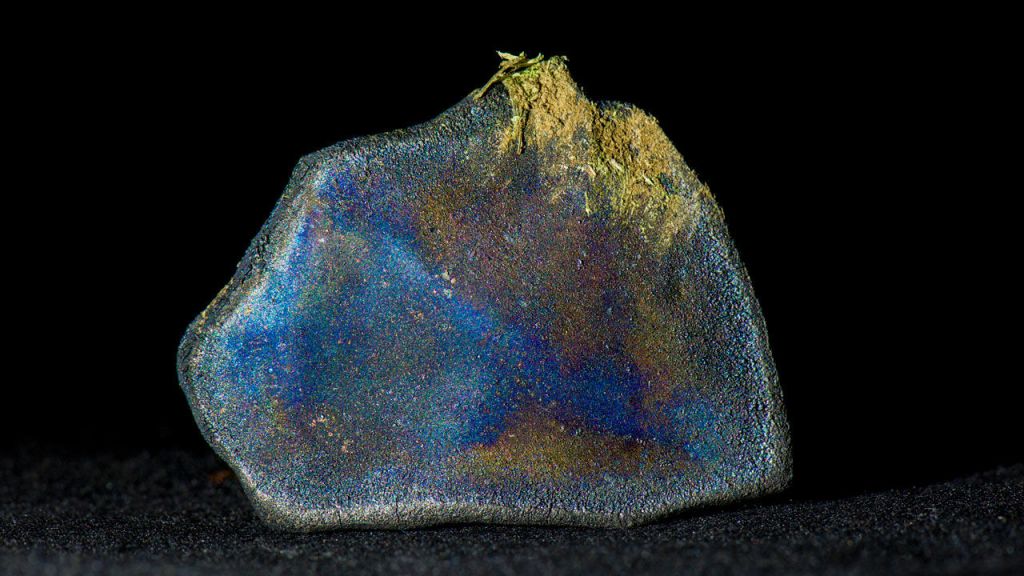Rainbow meteorite discovered in Costa Rica may hold building blocks of life
It's a good time to be a Costa Rican meteorite-hunter.

A small, soft space rock smacked into Costa Rica on April 23, 2019. And it may have carried building blocks for life.
The washing machine-sized clay fireball broke up before landing, . Locals found shards scattered between two villages, La Palmera and Aguas Zarcas. And while meteorites turn up all over Earth, these shards were special; the asteroid that spawned them was a soft remnant of the early solar system, made from the dust from the spinning nebula that would ultimately form our solar system, formed in even older stars. And the meteorites that rained down from the event — collectively called Aguas Zarcas — belong to a rare class called carbonaceous chondrites, which form in the wee hours of the solar system's emergence and are typically packed with carbon. This particular space rock contains complex carbon compounds, likely including amino acids (which join to form proteins and DNA) and perhaps other, even more complex building blocks of life.
Related: How did life arise on Earth?
While other rocky chunks from the very early solar system became parts of planets, this one remained intact and changed over time only through sunlight-driven chemical reactions that spurred the creation of more and more complex chemical compounds.
An earlier meteor that exploded over Murchison, Australia, in 1969 had similar features. Amino acids discovered in its clay, Joshua Sokol reported in Science, helped spread the idea that life on Earth may have originated from chemicals delivered in meteorites. And like the Murchison meteorite, this Aguas Zarcas fragment contains dust from the ancient, earlier Milky Way, before our sun formed.
Studies of this new meteorite are still incomplete, Sokol wrote. But researchers are excited that they can examine it using modern techniques, looking for complex organic compounds —— maybe even proteins —— that even if they did once exist inside the Murchison meteorite have long since disappeared, degrading in Earth's atmosphere. (The Murchison meteorite very closely resembled Aguas Zarcas, and if Aguas Zarcas contained proteins then Murchison probably did as well, though the opportunity to detect them has been lost.) Already, there's evidence of amino acids in this Aguas Zarcas fragment not found elsewhere on Earth.
Aguas Zarcas shards may offer the most pristine samples yet of the early solar system and pre-solar dust cloud. But landing as they did in the Costa Rican rainforest, Sokol reported, there's still the possibility of contamination.
Breaking space news, the latest updates on rocket launches, skywatching events and more!
Down the road, even more pristine samples may become available. The Japanese Hayabusa2 probe, launched in 2014 with the goal of sampling the asteroid Ryugu, is already on its way back with Ryugu dust onboard, a sample that may contain carbonaceous chondrite, Sokol noted. And in 2023, NASA will return its own samples from a similar asteroid, Bennu, which Sokol reported is likely related to Aguas Zarcas.
"These asteroid scraps will be truly pristine, having never touched the atmosphere or sat atop rainforest soil," Sokol wrote.
But for now, Aguas Zarcas is the best source of spacefaring carbon compounds available.
Originally published on Live Science.

Rafi wrote for Live Science from 2017 until 2021, when he became a technical writer for IBM Quantum. He has a bachelor's degree in journalism from Northwestern University’s Medill School of journalism. You can find his past science reporting at Inverse, Business Insider and Popular Science, and his past photojournalism on the Flash90 wire service and in the pages of The Courier Post of southern New Jersey.

